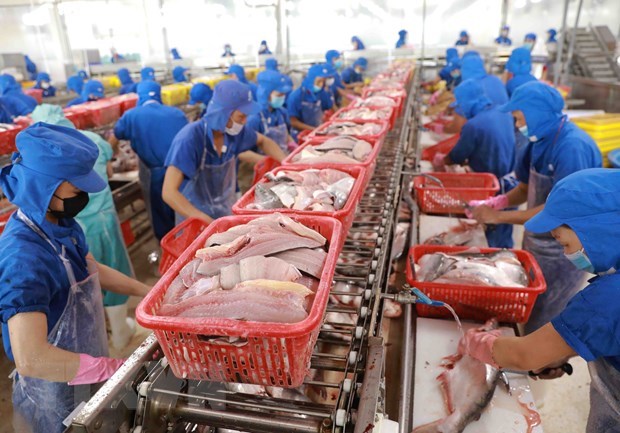HCMC – The agricultural, forestry and fishery sector has seen positive business results as its export revenue reached nearly US$28 billion in the first half of the year, rising 14% year on year.
This was announced during a seminar discussing how to promote the agro-forestry-fishery industry and improve its competitiveness held in HCMC on July 26.
Dao Duy Tam, deputy director of the Customs Supervision and Administration Department, under the General Department of Vietnam Customs, said the first half of this year saw nine product lines with an export value exceeding US$1 billion, including coffee, rubber, cashew, vegetables, rice, tra fish, shrimp, and wood products.
The report by the Ministry of Agriculture and Rural Development also showed that the United States was the top buyer of Vietnamese agro-forestry-fishery products, followed by China, Japan, and South Korea.
The United States purchased roughly US$7.61 billion worth of Vietnam’s agro-forestry-fishery goods, up 7.9% year-on-year and accounting for 27.3% of the total export value, primarily wood and wood products, which accounted for 66.8%.
China is the second-largest buyer of Vietnam’s agro-forestry-fishery items, at around US$4.97 billion, up 5.9%, and making up 17.8% of the total.
However, Vietnam’s agricultural and aquatic exports have faced a raw material shortage, informal cross-border trade, hurdles in growing and harvesting standards, and limitations in processing capability.
Moreover, enterprises have faced several challenges as the impacts of the Covid-19 pandemic and the Russia-Ukraine conflict have driven up costs of services and logistics, limiting their export competitiveness.
Particularly, the congestion of agricultural products at some northern border gates in recent years also adversely affected their performance.
Hence, it is suggested that the agricultural sector should overcome such obstacles by improving its competitiveness, bolstering agricultural and aquatic exports to Vietnam’s traditional markets, along with reaching out to the potential markets covered by free trade agreements, namely EVFTA and CPTPP.
Tam with the customs supervision body said the Government fully encourages agricultural exports with supporting mechanisms and policies. Exporting goods, especially agricultural and aquatic products, is facilitated through simple customs procedures and favorable conditions in customs supervision.
Nevertheless, Tam also noted that in the wake of Covid-19, Vietnam’s trading activities have had to deal with tight restrictions, given that many countries are still implementing strict health control measures.
In this context, Tam said that businesses should observe the pandemic situation and healthcare policy updates in Vietnam and other countries, particularly for trading in agricultural and aquatic products. At the same time, they should conduct commercial activities in accordance with international practices and carry out customs procedures as soon as possible to bolster their competitiveness.
Businesses also need to enhance the quality of agricultural products given the specific requirements of the importing countries while making efforts to diversify markets to avoid dependence on traditional partners only.











